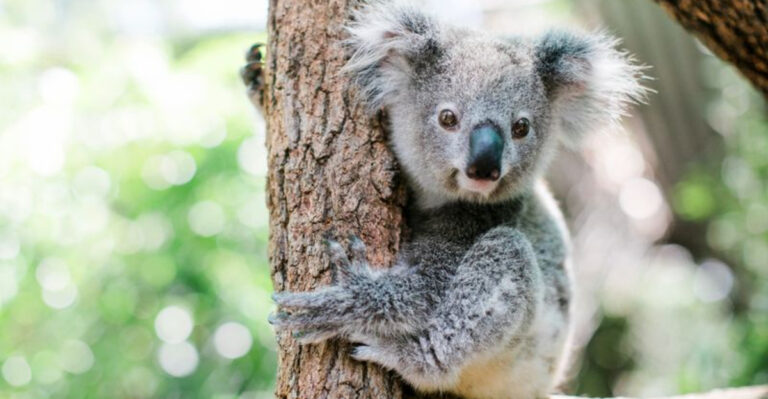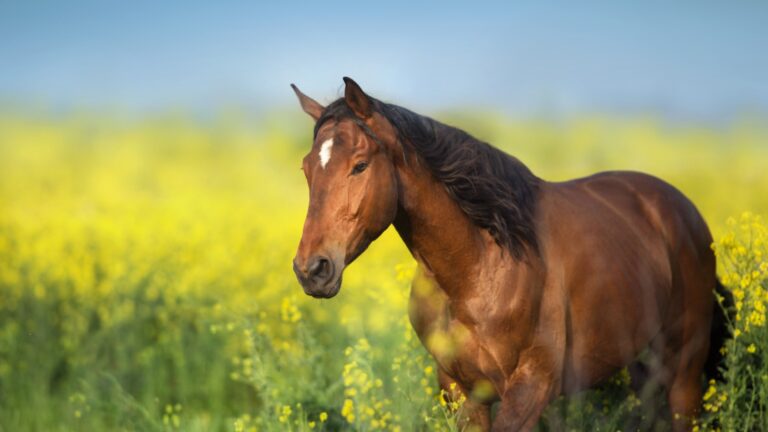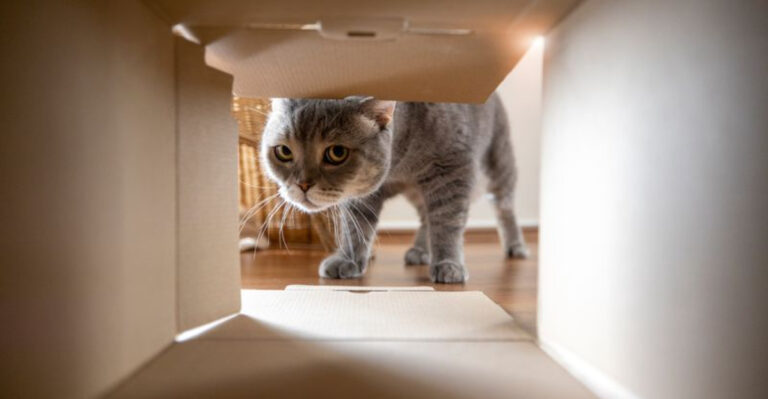14 Ways The American Robin Is Adapting To Nest All Year In The U.S.
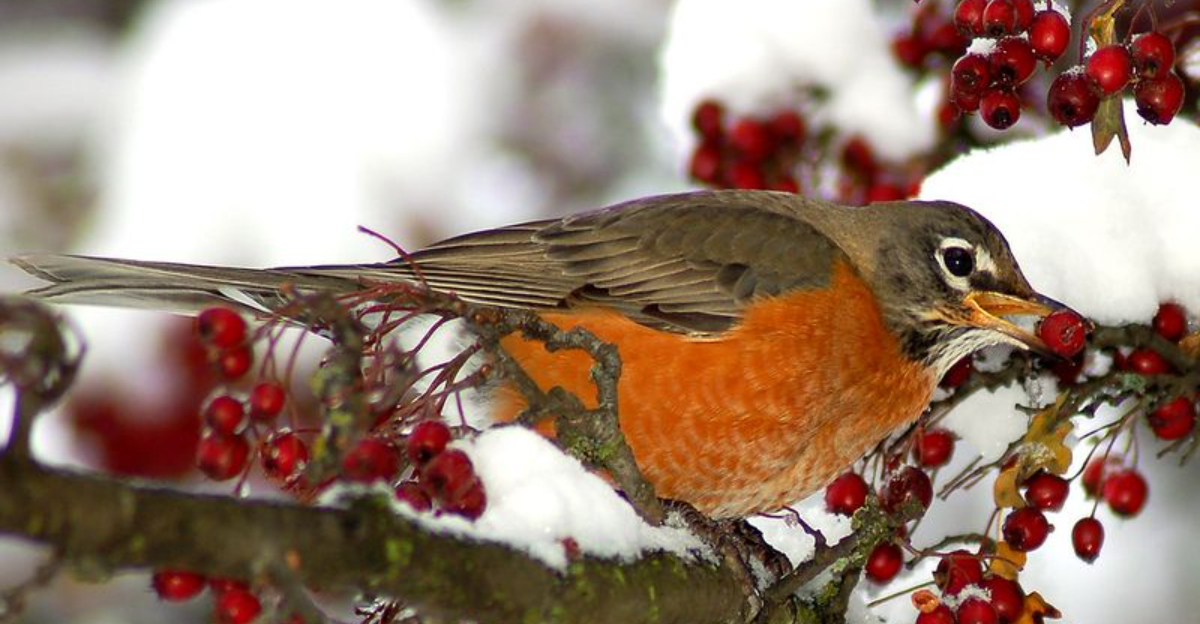
Traditionally migratory birds, American robins are changing their behavior in fascinating ways. These red-breasted backyard visitors now frequently stay put year-round in many U.S. regions, defying their age-old travel patterns.
Climate change, urban development, and the birds’ remarkable adaptability have created new opportunities for these resourceful creatures to nest through all seasons.
1. Urban Heat Islands Provide Winter Warmth
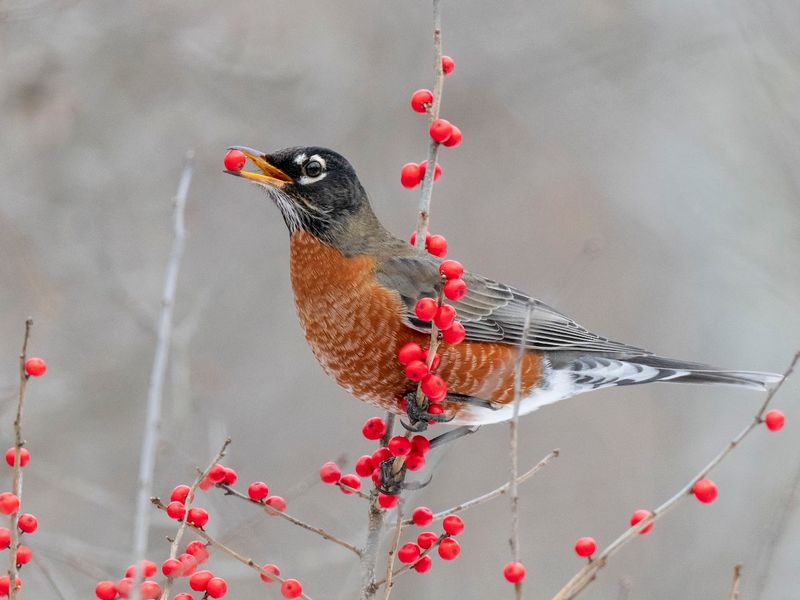
Cities trap heat like giant electric blankets, creating cozy winter havens up to 10°F warmer than surrounding countryside. This temperature boost helps robins find food when nearby rural areas are frozen solid.
Concrete and asphalt retain daytime warmth through chilly nights, giving city-dwelling robins a survival edge. Many have learned to exploit these artificial environments year-round.
2. Food Source Diversification
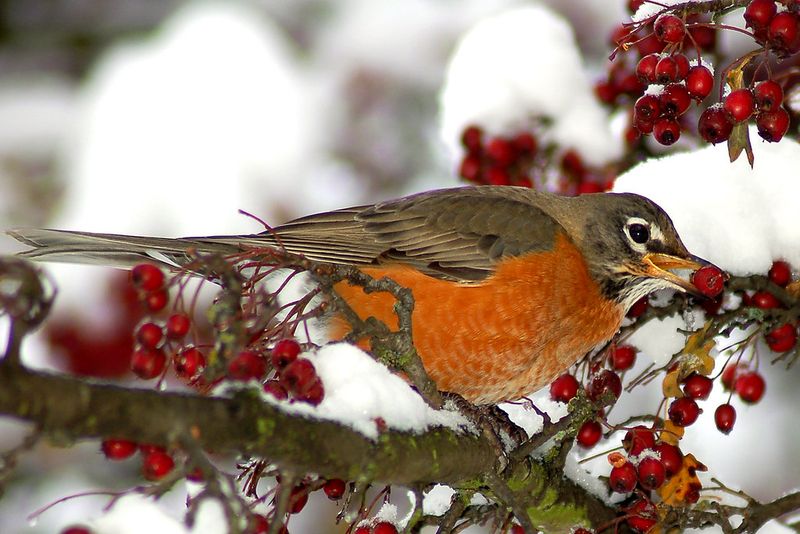
Worm hunters by reputation, these adaptable birds have dramatically expanded their menu. When frozen ground locks away their favorite earthworms, robins switch to berries, fruits, and even birdseed from feeders.
Some clever individuals have learned to find insects in tree bark or under leaf litter. This dietary flexibility allows them to thrive in areas they’d normally abandon during colder months.
3. Year-Round Water Source Access
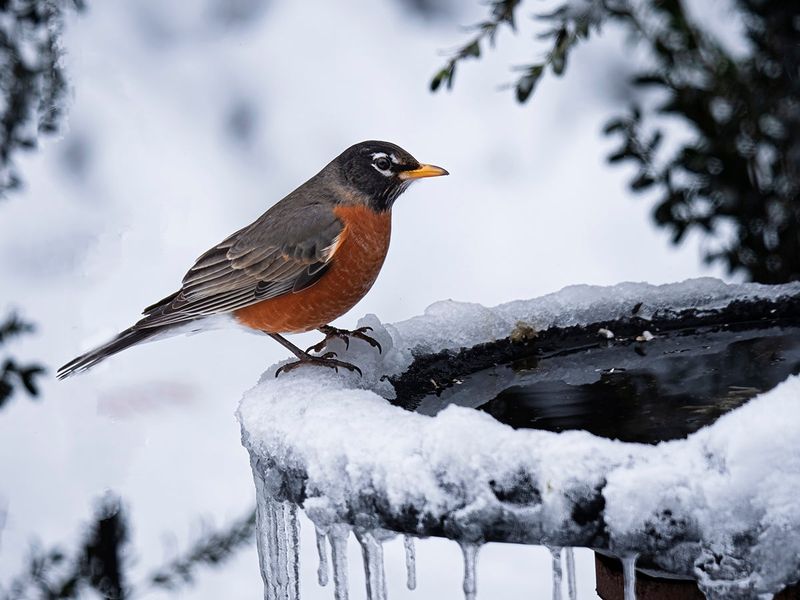
Heated birdbaths and flowing water features have become winter lifelines for stay-put robins. These birds need daily water not just for drinking but also for maintaining feather insulation through regular bathing.
Human-provided water sources that don’t freeze over create microhabitats where robins can maintain their essential routines regardless of season. Many neighborhoods now support resident robin populations thanks to these reliable water features.
4. Nest Material Innovations
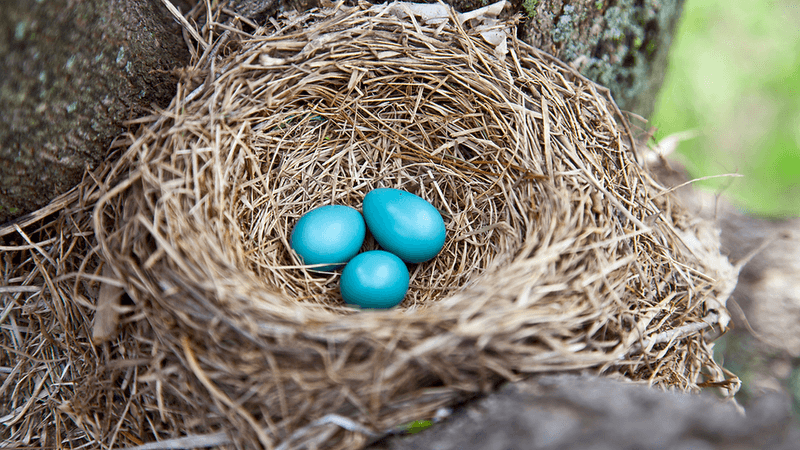
Resourceful robins now incorporate synthetic materials like dryer lint, string, and plastic strips into their nests. These modern materials often provide better insulation than traditional options.
Winter-nesting birds particularly benefit from these improvements, creating warmer homes that better protect eggs and nestlings from cold. Some robins have even been observed recycling materials from old nests, showing remarkable resourcefulness.
5. Strategic Nest Placement
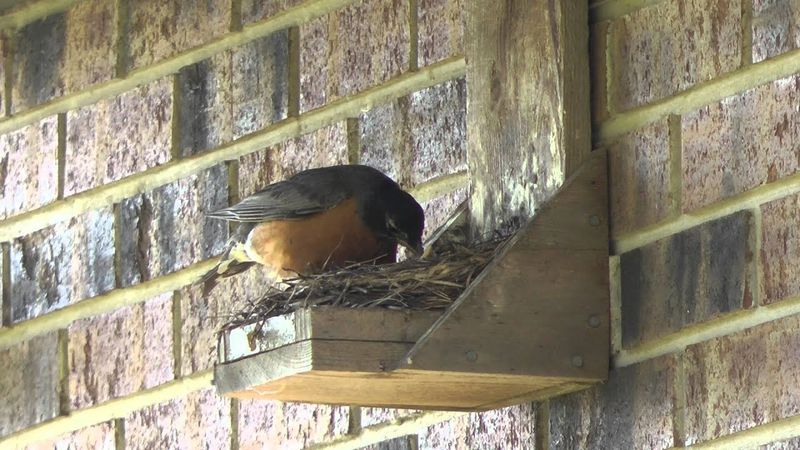
Talk about location, location, location! Year-round robins now regularly build nests near artificial heat sources like dryer vents, chimney flues, and outdoor lighting fixtures.
These clever birds also select south-facing locations that receive maximum sunlight during winter months. Building against brick or stone walls allows them to benefit from retained heat, creating microenvironments that can be 15°F warmer than surrounding areas.
6. Climate Change Response
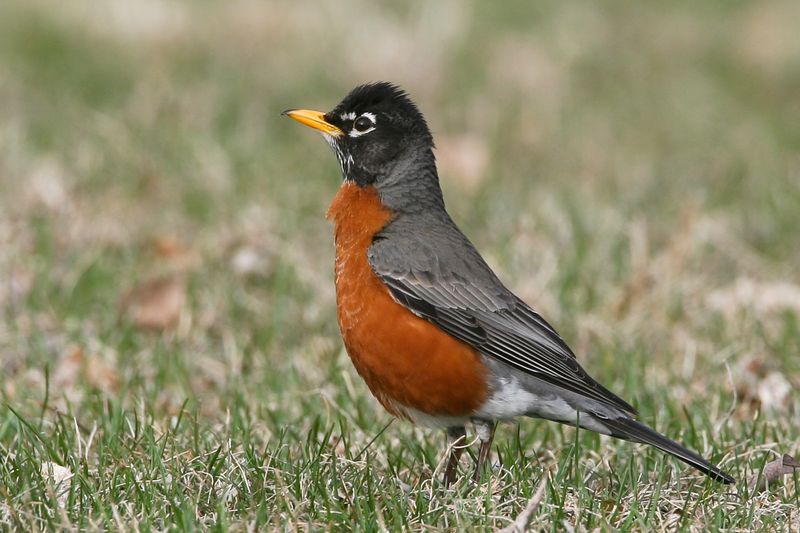
Warming winters have expanded suitable robin habitat northward by hundreds of miles. Areas once abandoned during cold months now host thriving year-round populations enjoying longer growing seasons and shorter cold periods.
These birds respond quickly to changing conditions, with some northern populations having completely abandoned migration in just a few decades. Their ability to adjust behavior based on environmental cues rather than rigid instinct gives them a survival advantage.
7. Protective Nest Building Techniques
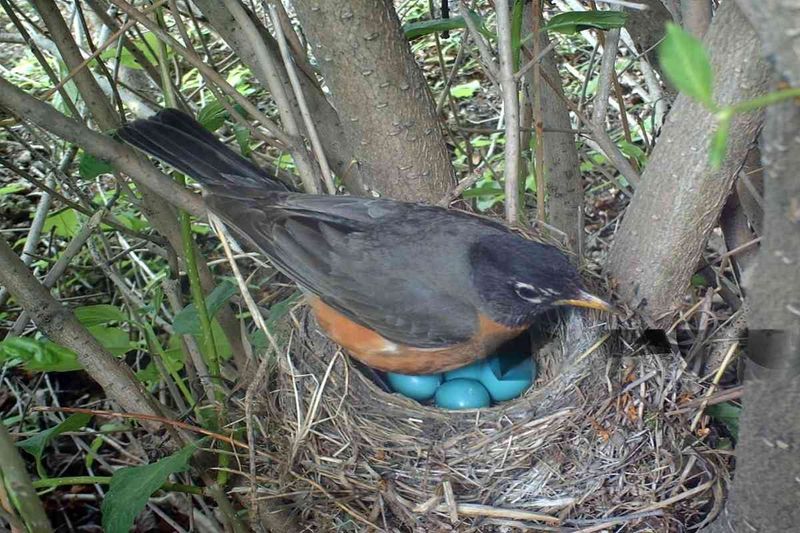
Winter-nesting robins construct more substantial structures than their fair-weather counterparts. These cold-season specialists create thicker mud cups with extra insulating layers and deeper nest bowls that trap body heat.
Some innovative birds build partial roof structures or select locations with natural overhead protection.
8. Altered Breeding Schedules
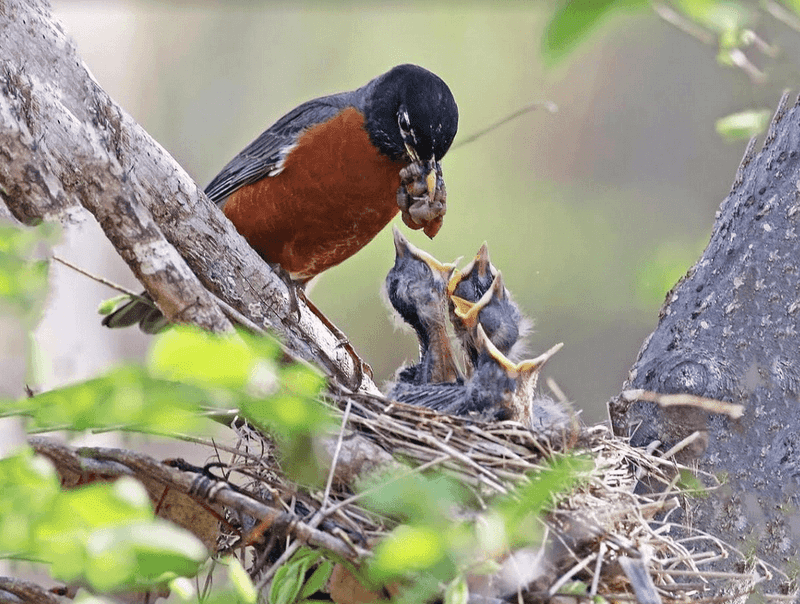
Forget the traditional spring nesting calendar! Year-round robins may breed during unusual times, taking advantage of mild winter periods to raise young when competition for resources is lower.
Some populations now produce additional broods during extended warm seasons. This schedule flexibility allows them to maximize reproductive success by timing egg-laying to coincide with favorable conditions rather than rigid calendar dates.
9. Human Structure Utilization
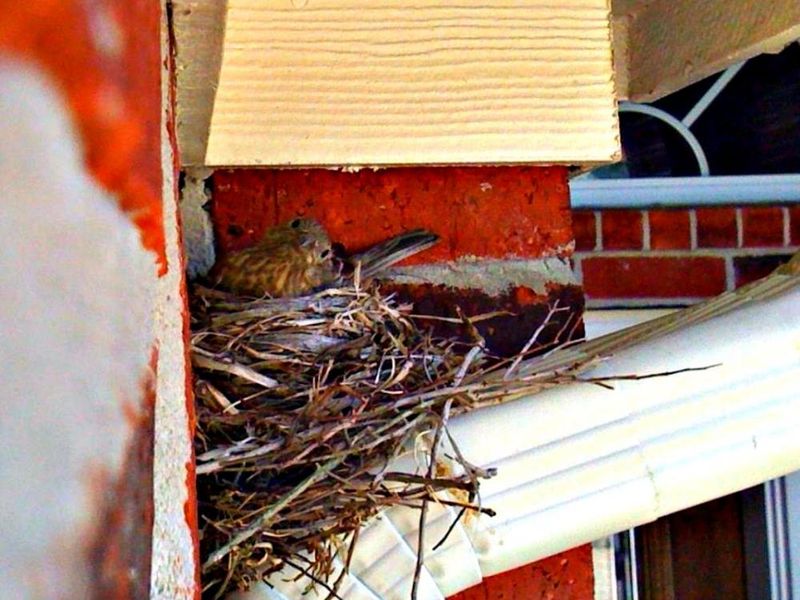
Porch lights, security cameras, and mailboxes make perfect robin real estate! These birds increasingly build nests on human structures that offer protection from weather and predators.
Covered patios, eaves, and outdoor light fixtures provide overhead shelter while often deterring climbing predators. Some robins return to the same human-made nest sites year after year, showing strong location fidelity once they find a successful spot.
10. Behavioral Thermoregulation
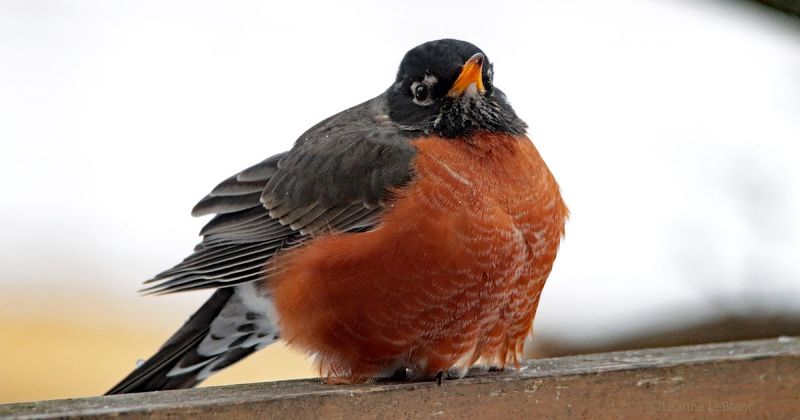
Sun-seeking becomes serious business for winter robins! These birds position themselves to maximize solar exposure during cold days, often facing directly toward the sun with feathers fluffed to trap warming rays.
During extreme cold, they enter a state of controlled torpor at night, lowering body temperature to conserve energy. This sophisticated energy management allows them to survive cold periods that would otherwise exceed their metabolic capabilities.
11. Supplemental Feeding Adaptation
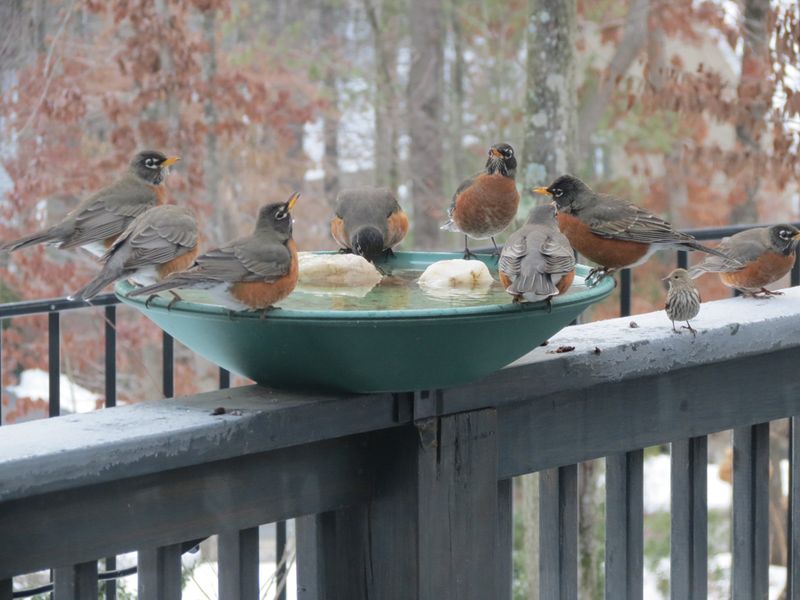
Backyard buffets have revolutionized robin survival strategies! Once shy of feeders, robins now show up for dried mealworms, fruit, and suet – foods that keep their energy up all winter.
Clever individuals even match human routines, arriving right when feeders tend to be filled, giving them a dependable edge in harsher climates.
12. Territorial Behavior Shifts
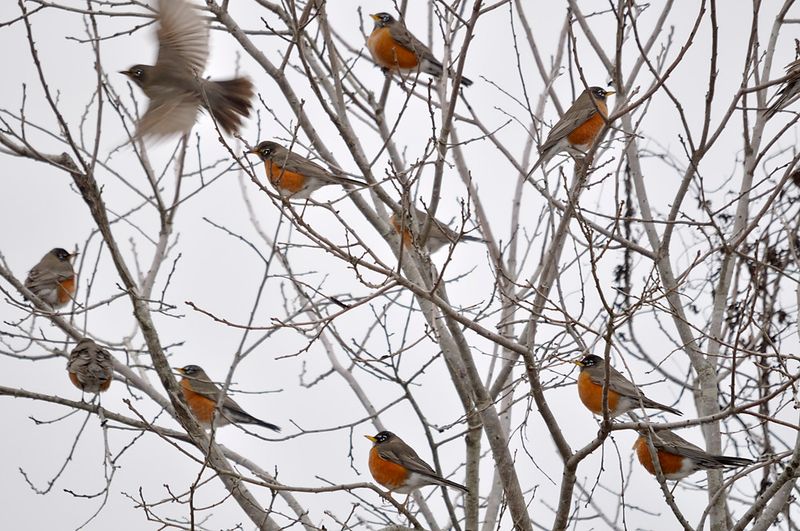
Summer’s solo singers become winter’s social butterflies! Robins that fiercely defend breeding territories in warm months form cooperative flocks during winter, sharing resources and protection.
These seasonal social shifts allow them to maintain access to prime nesting locations year-round. Some individuals maintain small core territories near reliable food sources while tolerating neighbors much closer than they would during breeding season.
13. Microhabitat Selection Skills
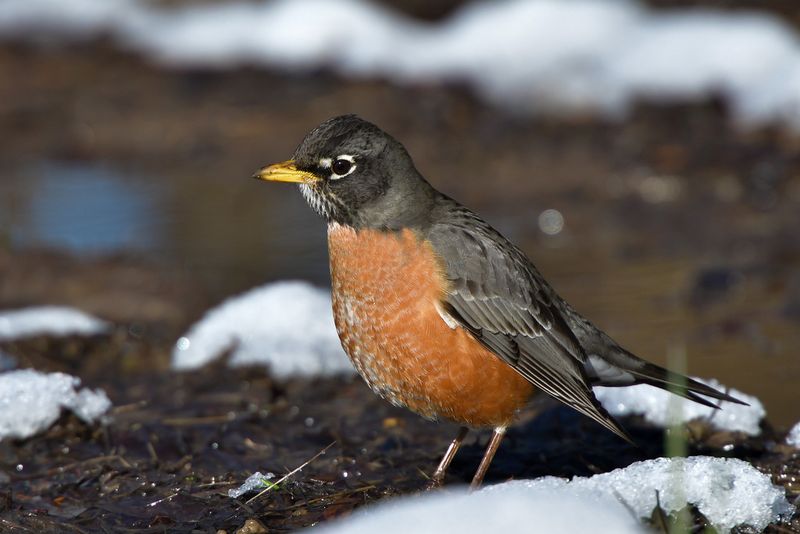
Wind-blocking hedges and sun-trapping rock gardens become robin magnets during cold snaps. These birds have developed sophisticated abilities to identify protected microhabitats that may be 10-15°F warmer than surrounding areas.
South-facing slopes, areas with dark mulch that absorbs heat, and locations near buildings all create protective pockets where robins can thrive despite challenging broader conditions. This habitat intelligence gives them crucial survival advantages.
14. Physiological Cold Adaptations
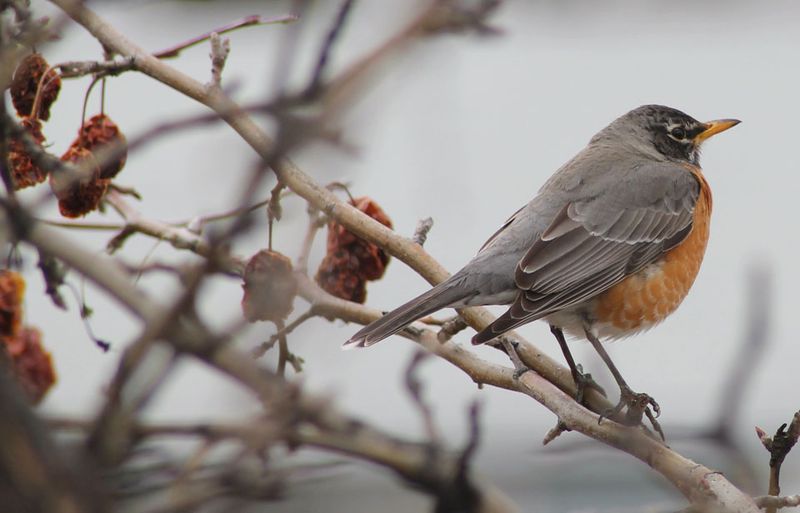
Feather fashion gets serious when temperatures drop! Robins that stick around for winter grow significantly more insulation, especially around their feet.
Metabolic shifts and quick genetic adaptations help certain populations handle the cold with surprising ease.


